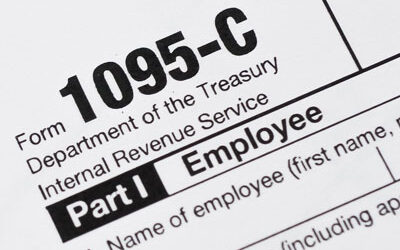In the last month, residents of the southeastern United States have faced unprecedented losses in the aftermath of Hurricane Helene. Read on to learn about casualty and disaster losses and how they may affect your tax returns. If you have questions about casualty and disaster losses or believe you may qualify, please contact us.
What are business casualty and disaster losses?
Casualty losses are sustained when property is destroyed or damaged resulting from fire, storm, shipwreck, or another casualty. Casualty losses can also occur when property is taken by theft, including burglary, robbery, embezzlement, and similar crimes. A casualty loss is considered a business casualty loss when the damaged property was connected to a trade or business, or any transaction entered into for profit. Unlike with personal property casualty losses, business casualty losses are generally deductible in the year in which they occur.
Business disaster losses are losses attributable to a federally declared disaster and occur in a federally declared disaster area. Federally declared disasters are determined by the President of the United States to authorize assistance by the federal government under the Robert T. Stafford Disaster Relief and Emergency Assistance Act. A federally declared disaster includes a major disaster declaration or an emergency declaration. Federally declared disaster areas are locations eligible for individual or public assistance resulting from the Presidential declaration.
1. When are business casualty and disaster losses deducted?
Casualty losses and disaster losses can both be deducted in the year that the loss occurs. However, taxpayers can elect to deduct a disaster loss in the immediately preceding tax year under Internal Revenue Code section 165(i). For example, if a disaster loss occurs in 2024, taxpayers can elect to deduct this loss on their 2023 tax return rather than on their 2024 tax return. Taxpayers can amend a previously filed return if choosing to make the election under section 165(i).
2. What is the amount of loss allowable?
- Generally, a business casualty loss is the lesser of (a) a taxpayer’s adjusted basis in their property or (b) the difference in fair market value of the property immediately before and immediately after the casualty event. However, if the property is completely destroyed, the decrease in fair market value is not considered and the loss amount is the adjusted basis of the property. Loss amounts must be reduced by any salvage value or insurance reimbursements that you receive or expect to receive.
- Adjusted basis generally means the original cost of the property plus improvements, minus depreciation allowed or allowable, amortization, depletion, etc. Adjusted basis does not include the cost of replacing the property. The IRS defines fair market value as the price for which you could sell your property to a willing buyer when neither of you has to sell or buy and both of you know all the relevant facts. To figure the decrease in fair market value you generally need a competent appraisal, or you may use the cost of repairing the property if certain conditions are met.
3. What if I have damaged or destroyed inventory?
- There are a couple of ways to deduct a casualty loss of inventory. First, the loss of inventory can be deducted through an increase in cost of goods sold by properly reporting the beginning and ending inventory balances. If this method is used, the loss is not to be claimed anywhere else as a casualty loss, and any insurance or other reimbursements received should be included in gross income.
- The other way to deduct a casualty loss of inventory is to deduct the loss separately. This is achieved by an adjustment to opening inventory or purchases to remove the affected inventory items. If this method is used, do not include insurance or other reimbursements in gross income. Instead, reduce the amount of the inventory adjustment by the reimbursement received.
- If your inventory loss is both attributable to a federally declared disaster and located in a federally declared disaster area you may elect to deduct the loss on the return for the immediately preceding year. However, your opening inventory balance should be adjusted for the year of the loss to prevent the deduction from being counted twice.
4. What is a casualty gain?
- If you receive insurance proceeds or other reimbursements that exceed the adjusted basis of the destroyed or damaged property, you could have a gain from the casualty event. The gain is calculated by taking the amount received minus the adjusted basis in the property at the time of the casualty event. The amount received includes any money or property received, including any reimbursement used to pay off a mortgage or other lien, minus any expenses incurred to receive the reimbursement.
- For example, your business building was destroyed in a flood event, and insurance awarded you a payment of $100,000. You received $80,000 in cash and the remaining $20,000 was used to pay off the outstanding mortgage on the property. The amount you received is the entire $100,000 insurance payment, even though the amount of cash directly received was $80,000.
5. Do I have to pay tax if I have a casualty gain from reimbursements?
- Whether or not your gain is required to be reported is often dependent on the type of reimbursement received. A gain is not reported if you receive reimbursement in the form of property that is similar or related in service or use to the property that was destroyed. The IRS deems any tangible replacement property acquired for use in a business to be similar or related if your destroyed property was located in a federally declared disaster area.
- You must generally recognize gain on destroyed property if you receive money as reimbursement. However, you can postpone reporting the gain if you purchase property that is similar or related in service to the destroyed property with a specified replacement period. You can also postpone reporting the gain to damaged property if you spend the reimbursement to restore what was damaged. To postpone the entire gain, the cost of replacement property must be equal to or more than the reimbursement received. If the cost of replacement property is less than your reimbursement, a gain is reported for the reimbursement amount that was unspent.
6. How do I report gains or losses from a business casualty or disaster loss?
- Casualty gains or losses on business and income-producing property are reported on Form 4684 Section B and on Form 4797.
References
IRS Publication 547 – Casualties, Disasters, and Thefts
https://www.irs.gov/pub/irs-pdf/p547.pdf
IRS Form 4684, Casualties and Thefts, Instructions
https://www.irs.gov/pub/irs-pdf/f4684.pdf
IRS Topic No. 515, Casualty, Disaster, and Theft Losses
https://www.irs.gov/taxtopics/tc515




